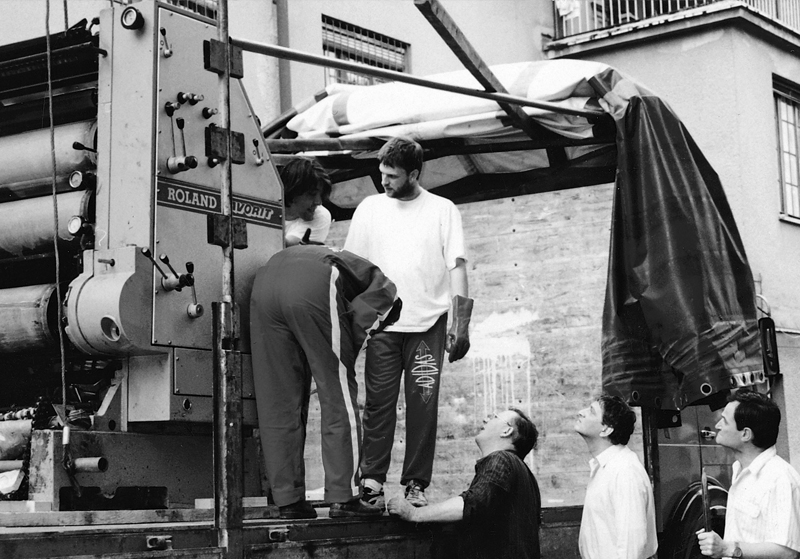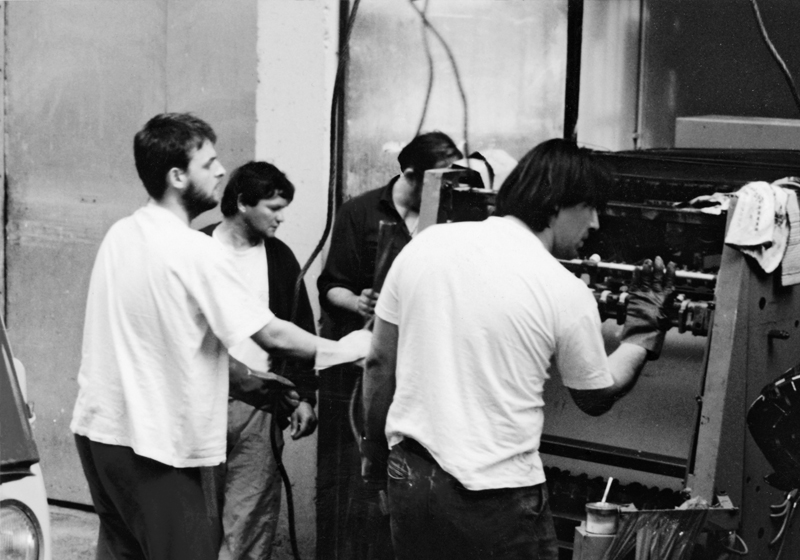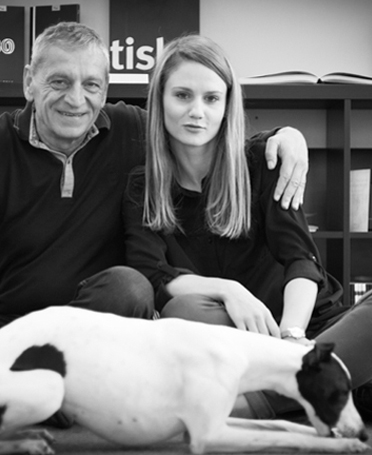Boštjan is a printer with a capital P,
falling in love first with printing machines in his youth (and machines in general, including a motorcycle, for instance) and then with each pixel and tint of his vocation, which, when he started, was a blend of creativity and surgical and technical precision. The printer was at one with the machine – in charge of every step of the printing process, often times also handling the design as well. If the printer was good, customers trusted him at every step. Well, if the customer was some cocky friend who liked to brag about his adventures between the sheets, it was not unheard of that his business card happened to include a Playboy bunny and the title “Professional Lover”. And if this friend also happened to be a party animal, these business cards sometimes – after a wild party, for instance – hopped on over to the wrong person, maybe his father, who at that time held a high position in a certain political organization, and the bunny consequently had his ears boxed.
When Boštjan started, such jokes were very rare; there was, however, a lot of hard work, first in the cardboard factory, where he became the youngest department head. Despite his youth, he did not back down before certain employees who preferred to spend their time with a glass instead of paper. Eventually he got tired of this work and took on new challenges at Tiskarna Ljubljana, where promotions followed the good old system of “seniority over competency”. He left and, with the reputation as one of the best printers in Ljubljana, found a job at a private printing house. He rose through the ranks very quickly, but when he stood up for bookbinders who asked for a salary increase, his salary was cut. This was the straw that broke the camel’s back – he purchased his first printing machine and started his own company. It was actually missing the necessary rollers, but he soon purchased them in bar Vrhničan, where at that time you could find anything: a good glass of spritzer, a cup of delicious coffee, as well as printing rollers – who would have thought? – just the right ones. His first production hall was an old classic – mum’s garage – where he produced such masterpieces as hippiesque motley posters for surfers, which were a real hit thanks to Boštjan’s method of colour mixing. At that time, the feel for printing was very important. Only when you applied the last, black colour, did the results become visible. If you messed something up, it was already too late – and because Boštjan had such an exceptional feel for printing, he was a very popular printer.





